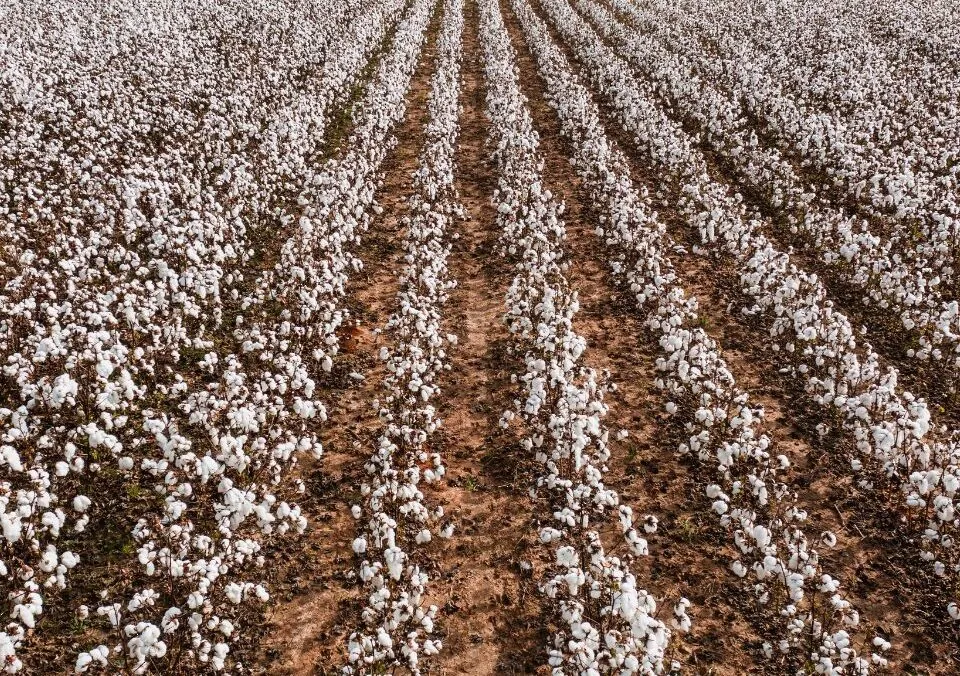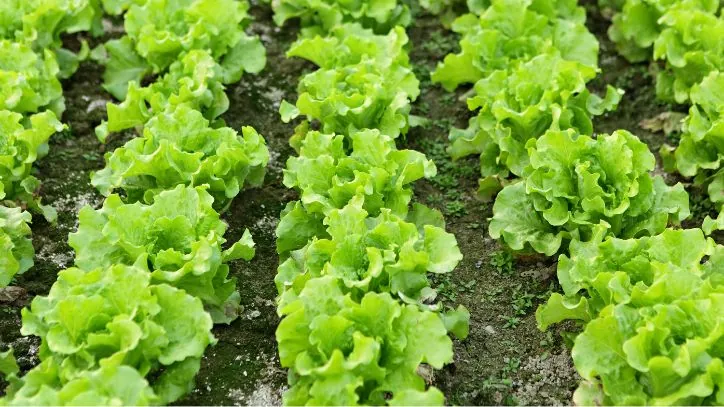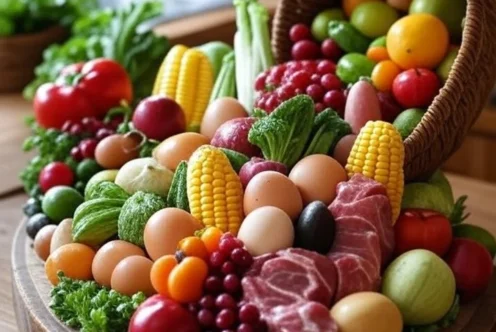Blog
How Many Farms Are in Arizona, and What Kinds of Farms Thrive in the State?

Arizona’s agricultural landscape is a fascinating blend of tradition, innovation, and resilience, shaped by its unique geography and climate. From the sun-scorched deserts of Yuma to the high plateaus of northern Arizona, the state’s farms produce a diverse array of crops and livestock that contribute significantly to both the local and national economy.
Drawing from the latest 2022 USDA Census of Agriculture and our land-grant university, the University of Arizona’s November 2024 report, Arizona’s Agribusiness System in the State Economy by Claudia Montanía, Dari Duval, George Frisvold, and José Quintero, this blog explores the number of farms in Arizona, the types of farms that define its agricultural sector, and their economic impact.
The Number of Farms in Arizona: A Snapshot from the 2022 USDA Census
According to the 2022 USDA Census of Agriculture, Arizona is home to 16,710 farms, a 12% decrease from the 19,086 farms reported in 2017. This decline mirrors a national trend, where the total number of farms dropped by 7% to 1.9 million over the same period. In Arizona, the reduction in farm numbers is attributed to several factors, including consolidation within the agricultural sector, urban encroachment, and economic pressures such as rising production costs.
Despite fewer farms, the average farm size in Arizona has grown, reaching 1,528 acres in 2022, significantly larger than the national average of 463 acres. This reflects a shift toward larger operations, particularly in counties like Maricopa, Yuma, and Pinal, which are among the top 40 U.S. counties for agricultural sales.
The decline in farm numbers is not uniform across the state. For example, La Paz County bucked the trend, reporting an increase in farm operations between 2017 and 2022, though it still has fewer farms than in 2012. In contrast, counties like Pinal, Graham, and Yuma saw significant decreases in farm numbers, driven by challenges such as water scarcity and land conversion for urban development. Over the past decade, Arizona’s total farmland has also decreased, dropping to 25.5 million acres in 2022, a loss of 600,732 acres since 2017. This reduction highlights the pressures on agricultural land in a state where more than a third of the land is used for farming and ranching.
Despite the decline in farm numbers, Arizona’s agricultural sector remains robust, producing $5.2 billion in agricultural products in 2022. This represents a significant increase from the $3.89 billion reported in 2017, driven by higher commodity prices and the efficiency of larger operations. The state’s farms are diverse, ranging from small family-run operations to large-scale agribusinesses, and they reflect Arizona’s unique agricultural identity.
Types of Farms in Arizona: A Diverse Agricultural Portfolio
Arizona’s farms are as varied as its landscapes, encompassing crop production, livestock operations, and specialty agriculture. The state’s arid climate and irrigation infrastructure, particularly in regions like Yuma and Maricopa counties, make it a powerhouse for certain crops, while its vast rangelands support significant livestock, specifically cattle, operations.
Crop Farms: Vegetables, Melons, and More
Crop production dominates Arizona’s agricultural output, accounting for 58% of total sales in 2022, or approximately $3 billion. The vegetable, melon, potato, and sweet potato category leads the state’s agricultural economy, contributing 27.5% of all sales. Arizona ranks fifth nationally in this category, trailing only California, Florida, Washington, and Idaho. Yuma County, often called the “winter salad bowl” of the United States, is a key driver, ranking third among all U.S. counties for vegetable sales, particularly for lettuce and leafy greens. The region’s mild winters and extensive irrigation systems enable year-round production of high-value crops.
“Arizona plays a key role in the country’s production of leafy greens, particularly lettuce varieties and spinach,” explains University of Arizona’s George Frisvold, a member of the study team. “Together, Arizona and California account for nearly 90% of all leafy greens produced (by weight) in the United States.”

Other significant crops include cotton and cottonseed, with Pinal County ranking eighth nationally for sales in this category, and hay and other crops, where Maricopa County ranks fourth among U.S. counties. Arizona’s crop farms also include nursery and greenhouse operations, which contributed significantly to the state’s $3 billion in crop sales. Most of the nursery and greenhouse operations thrive in controlled environments, producing ornamental plants, flowers, and specialty crops like herbs.
The state’s 85 USDA-certified organic farms, up from 67 in 2017, reflect growing consumer demand for organic produce, with sales of organic products reaching $97.9 million in 2017.
Smaller farms, particularly those under 50 acres, play a vital role in Arizona’s direct-to-consumer sales. In 2017, 826 farms sold directly to consumers through farmers’ markets, on-farm stores, roadside stands, and community-supported agriculture (CSA) programs. These farms accounted for most of the direct sales, emphasizing Arizona’s commitment to local food systems.
Livestock Farms: Cattle, Dairy, and Beyond
Livestock, poultry, and their products generated $2.16 billion in sales in 2022, making up 42% of Arizona’s agricultural output. Cattle and calves are a cornerstone of the state’s livestock industry, with 997,842 head across 5,864 farms as of the 2022 Census. Cattle operations are widespread, particularly in counties like Cochise and Pinal, where large ranches utilize Arizona’s extensive rangelands. However, tight cattle inventories, driven by drought and high input costs, have reduced herd sizes to historic lows, a trend noted in the USDA’s 2024 Cattle Inventory reports. Despite these challenges, cattle remain a significant contributor, accounting for 14% of total agricultural sales. In fact, all 15 counties in Arizona have cattle.
Dairy production is another major player, contributing 22.4% of Arizona’s agricultural sales. Arizona’s dairy farms, concentrated in Maricopa and Pinal counties, produce milk and related products that compete on a national scale. The state’s dairy sector benefits from modern facilities and economies of scale, though it faces challenges from rising feed costs and water constraints.
Beyond cattle and dairy, Arizona supports smaller but growing livestock sectors. The state’s honeybee industry is notable, with 28,275 colonies producing over 1.5 million pounds of honey in 2022. Additionally, Arizona farms raise poultry, hogs, and even shrimp in innovative desert aquaculture operations. These specialty livestock farms highlight the state’s ability to adapt to its environment and market demands.
Specialty and Emerging Farms
Arizona’s agricultural diversity extends to specialty and emerging farm types. The state’s 85 USDA-certified organic farms reflect a growing trend toward organics, driven by consumer demand for organic vegetables, fruits, and dairy products. These farms, primarily located in Maricopa and Yuma counties, cater to both local and national markets.
The 2022 Census also introduced new data points, such as hemp production, which is gaining traction in Arizona as farmers explore alternative crops. Precision agriculture, supported by improved internet access (available on 66% of Arizona farms in 2022, up from 57.4% in 2017), is another emerging trend, enabling farmers to optimize water and fertilizer use in the state’s arid conditions.
Arizona’s Native American farmers are a vital part of the state’s agricultural identity, particularly on reservation lands, which account for a significant portion of farms. The state has the largest share of Native American producers in the nation, reflecting the cultural and economic importance of agriculture in tribal communities.
Economic Impact of Arizona’s Farms
The University of Arizona’s report, Arizona’s Agribusiness System in the State Economy provides a comprehensive look at the sector’s economic contributions. In 2022, Arizona’s farms and ranches generated $5.2 billion in direct sales, but their impact extends far beyond this figure. When accounting for the agribusiness system — including input suppliers, processing, and distribution — the sector contributed nearly $31 billion to Arizona’s economy and supported 138,000 jobs. This represents a significant multiplier effect, where each dollar of agricultural output generates additional economic activity through supply chains and related industries. The report highlights the concentration of economic output in key counties. Maricopa, Yuma, and Pinal counties account for most of the agricultural sales, with 94% of Arizona’s agricultural commodity sales coming from just 433 farms with sales exceeding $1 million. These large operations, which represent only 2.6% of the state’s farms, underscore the trend toward consolidation. However, smaller farms, particularly those with sales between $25,000 and $49,999, grew by 19% in number, indicating resilience in niche markets like direct-to-consumer sales.
Arizona’s farms also face challenges that impact their economic viability. Rising production costs, including feed, fertilizer, and water, have squeezed profit margins. The USDA forecasted a 27% decline in net farm income nationally for 2024, driven by lower commodity prices and higher expenses. In Arizona, net cash income per farm averaged $72,599 in 2022, slightly below the national average of $79,790. However, counties like Yuma ($1.33 million per farm) and La Paz demonstrate strong profitability, while others, like Yavapai (-$19,020 per farm), face net losses.
Demographics of Arizona’s Farmers
The 2022 Census provides insight into the people behind Arizona’s farms. The state’s 29,100 producers are older on average (60.1 years) than the national average (58.1 years), with Gila County producers being the oldest (62 years) and La Paz County the youngest (55.6 years). Arizona’s farming community is also notably diverse, with 48% female producers — the highest share in the nation — and a significant proportion of Native American farmers. Additionally, 2,148 farmers have current or past military service, reflecting the state’s veteran population. 6,885 new and beginning farmers are entering the industry, signaling a renewal of interest in agriculture despite the challenges.
Challenges and Opportunities
Arizona’s farms face significant challenges, including water scarcity, climate variability, and urban development pressures. The decline in harvested cropland (down 5% in Arizona) and farmland acres reflects these constraints, particularly in counties like Pinal and Yuma. However, opportunities abound, particularly in high-value crops, organic production, and innovative practices like precision agriculture and desert aquaculture. The state’s investment in irrigation infrastructure and research, supported by institutions like the University of Arizona, positions it to remain a leader in agriculture.
Conclusion
Arizona’s 16,710 farms are a testament to the state’s agricultural resilience and diversity. From vegetable farms in Yuma to cattle ranches in Cochise, and from organic operations to emerging hemp producers, Arizona’s farms reflect a dynamic industry adapting to economic and environmental challenges.
The 2022 USDA Census of Agriculture and the University of Arizona’s report underscores the sector’s $5.2 billion direct contribution and nearly $31 billion total economic impact, supporting 138,000 jobs. As Arizona navigates water scarcity, rising costs, and consolidation, its farmers — diverse, experienced, and innovative — continue to feed the state and nation while shaping the future of agriculture.
By Julie Murphree, Arizona Farm Bureau Director of Strategic Communications


















